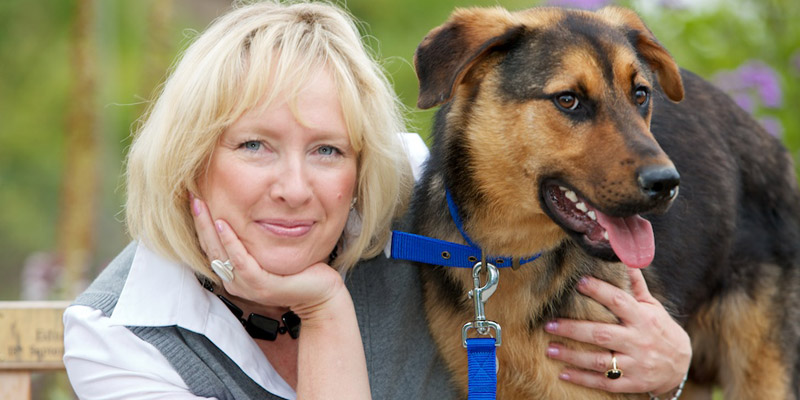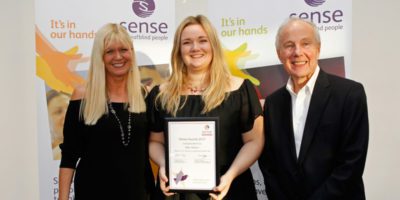Claire Horton is Chief Executive Officer of Battersea Dogs & Cats Home, having joined in June 2010, following her tenure as Chief Operating Officer for the Variety Club of Great Britain (the Variety Club Children’s Charity). An MBA holder, she has 16 years’ experience in management positions in both the commercial and not-for-profit sectors, the past 12 at CEO / board level. Prior to the Variety Club, Claire spent six years as Chief Executive of the University of Warwick Students’ Union.
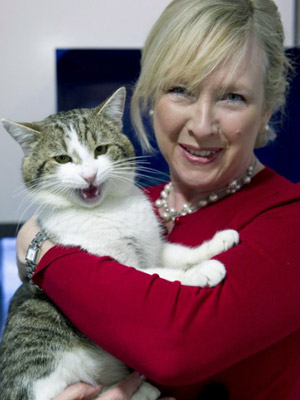
“…Not everyone’s job gives them the ability or opportunity to leave a legacy or totally change the world (or a bit of it at least) but working in charities does. And it’s never too late to change sectors or change careers…”
Claire, please can you tell us about your career to date and why you are so passionate about working in the charity sector?
I genuinely believe I have been truly blessed with the roles I’ve had for the past thirty years. I’ve worked mainly in public service in one form or another, be it the police service, education or welfare charities and I’ve loved every minute of it. I’ve worked both as a volunteer and as a member of staff and both have helped shape who I have become.
I’ve seen the best and the worst of people, lived their struggles and tried to make things better, though not always successfully. I’ve had multiple roles from fundraiser to marketer, public affairs manager to operations manager, commercial director and then into general management and ultimately national organisation leadership roles. What I’m about to say might sound a bit dramatic but I promise, every word probably sums up how those of us working in the Third Sector feel about our roles.
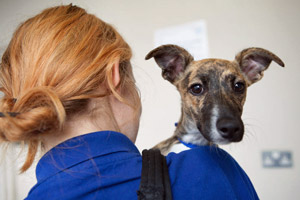
I get to shape services that change the way we think, the way we live – every day I, and people like me, all over the world, get to do great things. We are a voice for those who have none, the protectors of those in need. We are champions for change.
Not everyone’s job gives them the ability or opportunity to leave a legacy or totally change the world (or a bit of it at least) but working in charities does. And it’s never too late to change sectors or change careers. Our sector sees people bring those great transferable skills across from commerce every day. There are some quite incredible charities out there and some even more incredible roles waiting for amazing people.
Whatever role people work in there’s one vital thing – everyone has to care about delivering services well and protecting the charity and its users from harm. I have a key message that I share with everyone who ever comes to work at Battersea, be they staff member or volunteer:
“…as guardians of this longstanding national institution, we have a duty to ensure we do nothing but good while we are here. We are building on the foundations laid by thousands of people who have gone before us. However long we stay, we are all just passing through and yet while we are at Battersea, we are all ambassadors, we are all fundraisers and we are all champions for animals that need us. Not just the ones in our care, we are also a voice for those we may never see – our job is to ensure Battersea’s doors remain open for another 155 years, and to change the way a nation treats its animals…”
It’s hard to resist such a rallying cry and then not do a good job. That’s why working in charities is for passionate people.
Would you be able tell us more about your role and Battersea, what it involves, and how the skillset needed to lead a charity is different from the skillset needed to lead a corporate organisation?
Some people find it hard to comprehend that a charity has to be run as a business but frankly, it does, whatever size it is. If it doesn’t, it will eventually run into problems, if not financial, then legal. I don’t believe the skill set required for a charity is any different to working in the corporate world, the same principles still apply. It’s my job to make sure the books balance, the business operates efficiently and effectively.
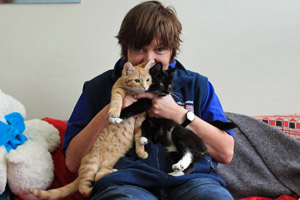
You need to be able to budget, develop a plan and monitor its success and report on results. If charities fall short we answer to a regulator and often the media or an angry public. We therefore also need to plan and manage the multi-channel marketing and awareness drives we do carefully, be sure that ways in which we seek to raise our profile and brand awareness with multiple audiences are properly and effectively delivered and develop communications platforms to suit all of them.
We also have the same people responsibilities – we need to look after our workforce and have the same challenges in delivering a good pay and reward package to ensure the strong recruitment and retention of great people. We still need to create the best working environment we can, ensure communications are strong up, down and across the organisation. If we are to be successful, everyone needs to buy into our vision for growth and development for the organisation and commit to working towards it.
Anyone who wants their organisation to succeed and be the best it can be has to take people with them, inspire ambition and drive passion, yet be clear that as lovely as everyone might be(!), this isn’t a democracy and life can get tough too. We push always for continuous improvement, empower our people to take the hard as well as easy decisions, take calculated risks when necessary and trust them to strive always to do the right thing.
Many of those things cut across both sectors but for me, the real difference actually comes from looking at the end user – for a commercial business their customers help them deliver a profit. In charities, we aim for excellence and developing services for our beneficiaries whilst not chasing a profit. And yes, whilst we too are always looking to drive increases in income, our income sources are not usually our service users / customers.
Our funders are most frequently donors; the general public, philanthropic individuals who want to give back and to enrich civil society, companies who want to encourage their own people to do something good for a charity or their community, charitable trusts who seek to support voluntary services.
Our engagement with our funders is often softer, more long term and incremental. We want people to support us for life – we want them to think of us when they either need help or know someone else who needs us – we want to remain front of mind always. Our relationships often pass from generation to generation and some people will carry on supporting us long after they have gone, by leaving us a lasting legacy in their will.
What proportion of your workforce is made up of volunteers and what are the challenges and opportunities for harnessing the skills and enthusiasm of volunteers in addition to employed staff?
At Battersea we have over 1000 volunteers working alongside around 360 members of staff. I’ve worked directly and continually with volunteers in every role I’ve had for the last 30 years and am a big believer in being a visible presence on the front line, being accessible and open to challenge and discussion. I don’t think there’s a day that goes by that I don’t meet, see or work with a volunteer for Battersea.
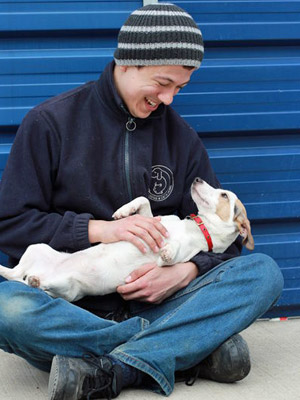
I always ensure that my organisation properly engages and involves its volunteers and that we invest in a Volunteer Management Team to properly support and coordinate all our volunteer recruitment, training and management.
Ultimately, regular and comprehensive communications out to staff and volunteers, both separately and collectively is really important. Each needs to know that they are valued and each needs to know how their partnerships make a bigger difference for animals. Battersea is blessed with some incredible people and we work hard to find and keep them.
How important is outreach work and educating the public about caring for their pets responsibly in helping prevent animals being abandoned or mistreated?
It’s critical. Tackling problems at source is vital for charities as we need to change behaviour, raise awareness and help people know more and do things differently or we will all just keep on chasing our tails and we’ll never get anywhere.
Battersea’s biggest issues by far are irresponsible ownership and back street breeding – the two are intrinsically linked. Every single day we take in another 14 dogs; most of them unwanted or abandoned by their owners. Each one finds its way to us through no fault of its own, bewildered, scared and lacking any sorts of confidence. Many of them are in desperate need of veterinary care and for some, it’s already too late. The victims of overbreeding, bad breeding, little or no socialisation, highly negative training or just plain and simple neglect – for these dogs there is only one outcome.
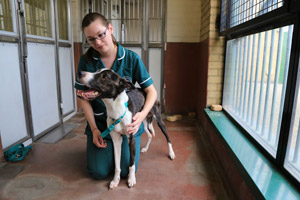
That’s where our Community Engagement teams come in – our specialist teams are out there day and night in and around the big London, dog control hotspots. We have a mobile unit where we offer advice on care, safety, animal health and the law. We microchip dogs and cats for free, we offer collars and tags for unmarked dogs, we teach people how to train their dogs and to keep themselves and their children safe around dogs.
We work in prisons and young offenders institutions where we are able to work directly with inmates. We take in dogs almost as therapy. We help people (mostly male prisoners) develop their communication and future job skills, learn about responsibility through animal care and training, understand emotions and start to see the animals as something more than a disposable asset.
We have been bowled over by how well we have been received in prisons, young offenders institutions, schools and community groups as people see us as a safe and trusted presence. We work with multiple agencies, the police and local community bodies including football clubs in shared initiatives. We have seen really positive results so far but we recognise this is a generational issue and it will take years to properly impact. So we start here and just keep on going.
What are the greatest challenges you face at Battersea and how are you using innovative methods and partnerships to adapt and extend your reach?
Always money. Battersea is entirely reliant on the generosity of members of the public, philanthropists and companies to fund its lifesaving work and like many charities the pressure on our resources is significant, so we are always looking for new and innovative ways to make money.

We have developed of a commercial range our own brand Battersea products to spread our reach UK-wide – we sell dog toys through Tesco, and we sell Battersea greetings cards, calendars and books through well-known bookstores and supermarkets, so we are doing lots to try and capture interest and support.
How are tools like social media and digital payment technologies (e.g. text and digital giving) helping you fundraise?
We have a very strong and active social media community, with over 500,000 Facebook and 148,000 Twitter followers, to which we promote giving to Battersea, buying gifts for our animals and our partnerships with companies. One example is this Christmas we expect thousands of special meals, toys and treats will be donated for the dogs and cats staying with us over the festive period.
Check out our website www.battersea.org.uk and see what lovely gifts you could give your own loved ones whilst helping a Battersea animal.
What is it like working with Paul O’Grady on the ITV show, ‘Paul O’Grady: For the Love of Dogs’, and how did this link come about?
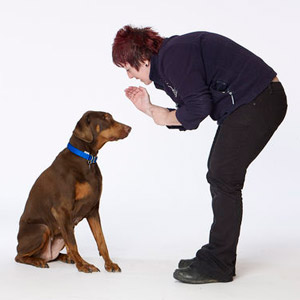
Over 5 million viewers tune into our ITV series every week to see Paul meeting our dogs and helping their journey through the home. The series has now won multiple awards and has benefited our animals in so many ways, with more people from across the UK coming to the home to get a Battersea dog (and actually cats too!), leaving money in their wills to our charity, or applying to work or volunteer with us.
When people come to our centres they expect to see Paul. So many people think that he works here full time. He’s such a wonderful presence when he is here – the passion for our dogs that comes across on screen is 100% genuine and we can’t get him out of a kennel! When ITV approached us about working with Paul O’Grady on the series we knew that it would be the start of something special, and four years later we’re so grateful for everything Paul has done for Battersea, not least rehoming his own rescue dogs Eddie and Boycie.
There’s been a bigger benefit too and that’s the awareness to the plight of rescue animals that Paul has raised. Our colleagues in rescue centres up and down the country have told us they have seen more people interested in rehoming a rescue dog than ever before – and that’s really great news for the thousands of stray, lost and abandoned dogs and cats out there looking for a home.
What is coming up next for you and Battersea and how can our readers get involved?
Fans of ‘Paul O’Grady: For the Love of Dogs’ can look forward to watching our Christmas Special on Christmas Day at 5pm, an hour long programme featuring lots of incredible Battersea stories.
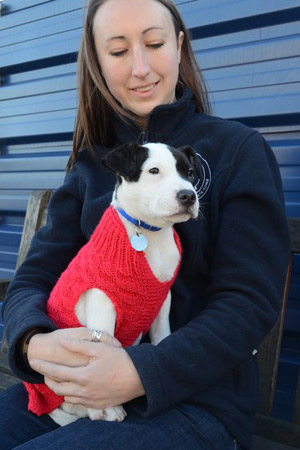
We have reached crisis point and there is only one way forward – to build a new veterinary hospital without delay. This purpose-built, modern facility will be the largest of its kind in the UK, and the Hospital will ensure Battersea remains the standard bearer for animal care long into the future.
We’d be so very grateful to your readers if they could donate towards or help raise money for this life-changing facility by contacting us on 020 7627 9330.
http://www.battersea.org.uk/dogs/
https://www.facebook.com/battersea

